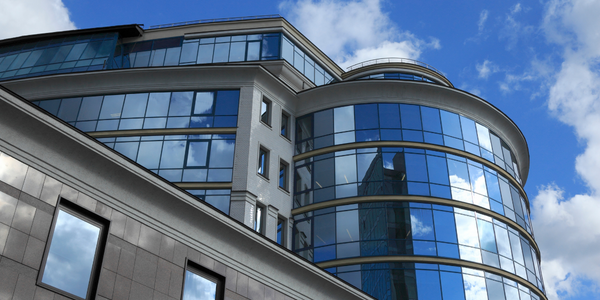Customer Company Size
Large Corporate
Region
- Middle East
Country
- United Arab Emirates
Product
- EcoStruxure for Hotels
- EcoStruxure Building Operation
- EcoStruxure Guest Room Expert
Tech Stack
- IoT
- Cloud Computing
- Data Analytics
Implementation Scale
- Enterprise-wide Deployment
Impact Metrics
- Cost Savings
- Energy Saving
- Environmental Impact Reduction
Technology Category
- Platform as a Service (PaaS) - Connectivity Platforms
- Platform as a Service (PaaS) - Device Management Platforms
- Analytics & Modeling - Real Time Analytics
Applicable Industries
- Buildings
Applicable Functions
- Facility Management
Use Cases
- Building Automation & Control
- Building Energy Management
- Energy Management System
Services
- System Integration
- Cloud Planning, Design & Implementation Services
About The Customer
Hilton Garden Inn Dubai Mall of the Emirates is a four-star hotel located next to the Mall of the Emirates and its world-famous indoor ski slope. The hotel is the largest Hilton Garden Inn outside the U.S. and is one of Hilton’s most efficient and sustainable hotels. The hotel was constructed on a tight timeline and included the added challenge of achieving certification in the LEED building program, the most widely used green building rating system in the world. The hotel was awarded LEED Gold Certification and actually opened ahead of schedule.
The Challenge
Hilton wanted to meet a critical need in a city looking to further boost tourism: offer an affordable four-star, focused-service option in an area saturated with five-star offerings. However, Hilton had to answer some tough questions: How could they keep operations lean and efficient? To what extent could they control energy costs? Would they be able to meet tight development timelines and still ensure the facility met their sustainability standards? And, most importantly, could they do all of this and still deliver an exceptional guest experience? The hotel was constructed on a tight timeline and included the added challenge of achieving certification in the LEED building program, the most widely used green building rating system in the world.
The Solution
Hilton chose the Schneider Electric EcoStruxure Building solution, which includes a building management system, EcoStruxure Building Operation, and a guest room management system, EcoStruxure Guest Room Expert. Integrating Schneider’s building management (BMS) and guest room management systems (GRMS) with Hilton’s property management system (PMS) on a single technology platform was crucial to Hilton achieving its goals. They wanted to do their part in combating climate change, and to have a facility that was both operationally and energy efficient, all while maintaining their high standard for guest satisfaction. The integration of these three systems (BMS, GRMS, and PMS) is unique, with only a handful of hotels in the world currently employing it so far. And it has significant advantages. Because of this integration, every phase of a guest’s experience is recognized by the system.
Operational Impact
Quantitative Benefit

Case Study missing?
Start adding your own!
Register with your work email and create a new case study profile for your business.
Related Case Studies.

Case Study
Energy Saving & Power Monitoring System
Recently a university in Taiwan was experiencing dramatic power usage increases due to its growing number of campus buildings and students. Aiming to analyze their power consumption and increase their power efficiency across 52 buildings, the university wanted to build a power management system utilizing web-based hardware and software. With these goals in mind, they contacted Advantech to help them develop their system and provide them with the means to save energy in the years to come.

Case Study
Intelligent Building Automation System and Energy Saving Solution
One of the most difficult problems facing the world is conserving energy in buildings. However, it is not easy to have a cost-effective solution to reduce energy usage in a building. One solution for saving energy is to implement an intelligent building automation system (BAS) which can be controlled according to its schedule. In Indonesia a large university with a five floor building and 22 classrooms wanted to save the amount of energy being used.

Case Study
Powering Smart Home Automation solutions with IoT for Energy conservation
Many industry leaders that offer Smart Energy Management products & solutions face challenges including:How to build a scalable platform that can automatically scale-up to on-board ‘n’ number of Smart home devicesData security, solution availability, and reliability are the other critical factors to deal withHow to create a robust common IoT platform that handles any kind of smart devicesHow to enable data management capabilities that would help in intelligent decision-making

Case Study
Protecting a Stadium from Hazardous Materials Using IoT2cell's Mobility Platform
There was a need for higher security at the AT&T Stadium during the NFL draft. There was a need to ensure that nuclear radiation material was not smuggled inside the stadium. Hazmat materials could often be missed in a standard checkpoint when gaining entry into a stadium.

Case Study
Commercial Building Automation Boosts Energy Efficiency
One of the challenges to building automation is the multitude of non-interoperable communications protocols that have evolved over the years. Buildings have several islands of automation. Bridging the islands of different automation without losing the considerable investment in each specialized control network is the main focus in this solution.








